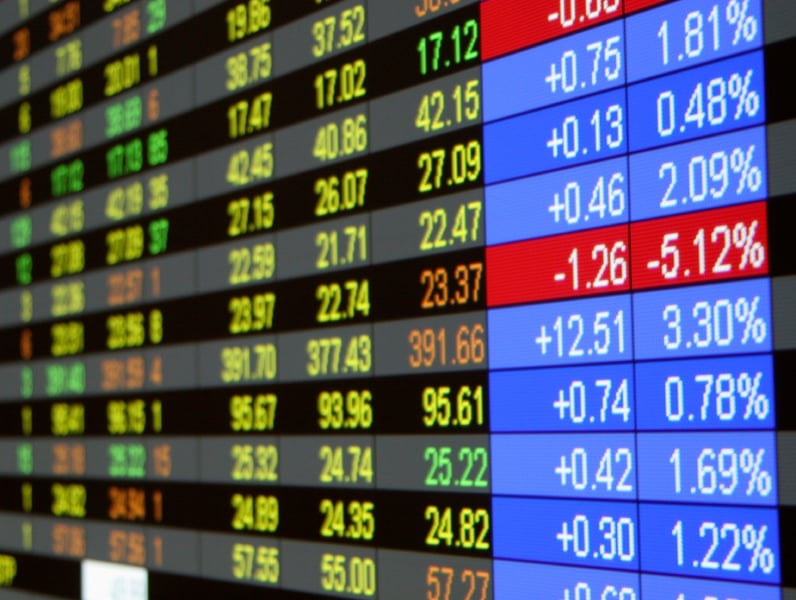Since 2011, money has flowed almost nonstop into the industry as investors buy into the promise of new drugs. Signs are increasingly pointing toward an end to the boom.
Biotech's days of unfettered optimism may be numbered. Since 2011, money has flowed almost nonstop into the industry as investors buy into the promise of new drugs. Signs are increasingly pointing toward an end to the boom.
One key measure of investor pessimism, the short interest ratio, has about doubled for the Nasdaq Biotechnology Index since 2013, according to data compiled by Bloomberg. The ratio, a measure of how many trading days it would take for short sellers to cover their positions, has been reflecting increasingly more bearish sentiment than the broader Nasdaq Composite Index since last year.
Driving the boom until now have been blockbuster initial public offerings and multibillion-dollar market valuations for biotech companies that don't yet have a single product for sale.
Spark Therapeutics Inc., for example, has one therapy in late-stage testing. On its first-ever day of trading in January, the stock doubled to make it a $1.2 billion company.
“My initial reaction wasn't, 'Wow, this is great,'” Carole Nuechterlein, head of the Roche Venture Fund, said at a Feb. 25 panel at the Biocom Partnering Conference in San Diego. “It was more, 'The end is coming.'”
While investors have profited during biotech's rise, the concern is that a handful of failures in clinical trials — which isn't out of the ordinary in this industry — could send investors fleeing. The last downturn followed a two-year boom that started in 1998 and saw the Nasdaq biotech index rise fourfold. When it crashed, it took a decade for investors to get excited again.
Heath Lukatch, a partner at Novo Ventures, said he's “inherently nervous” to see investors who don't specialize in health care join the boom, and who may one day leave and take their dollars with them.
GENERALISTS
“These generalists aren't going to be here forever,” Mr. Lukatch said. “Biotech will go out of favor at some point in time. One or two failures won't rattle the markets, but a string of failures across high-profile companies could be damaging.
A market drop would have an impact for the Nasdaq as a whole. The biotechnology subsector makes up 11% of the index's weight, according to data compiled by Bloomberg, bigger than software, semiconductors, Internet companies or any other subgroup, as of March 4.
In the last two years, companies have started going public earlier and earlier in the drug development process, said David Schechner, a managing director in life sciences investment banking at Baird Global Investment Bank
Before 2013, it was “very unusual” for a pre-clinical or phase 1 company to go public, Mr. Schechner said. Yet in 2014, 10 did, compared with four in 2013. Those early stage companies might not have even considered selling stock a few years ago, he said.
“I don't think that there's anyone who's recently gone public where they're going to have a product that's commercialized within a year of going public,” he said.
The early stage biotechs are also doing well. Among biotechs that went public in 2013, those with drugs in the first stage of human testing or still in the lab are all trading above their offer prices, according to data from Baird. Yet of later-stage product companies that went public the same year, only half to three-quarters are trading above than their offer price.
BELIEVE THE BOOM
There are reasons to believe in the boom. Biotech's current stock rise has been matched by an impressive pace of scientific achievements. New treatments in cancer, hepatitis C and genetic disorders are advancing in the pipeline or are approved and on the way to commercial success.
Large biotechnology companies are “delivering top-line revenue, they're delivering earnings, and ultimately it seems that the science is playing out commercially,” Novo's Mr. Lukatch said.
Biotech companies have also been frequent acquisition targets, further driving up valuations. There were $35 billion worth of completed or pending takeouts of biotech companies in 2014, the most since 2010's $49 billion, according to data compiled by Bloomberg.
It's also gotten cheaper and easier for startups. The Food and Drug Administration approved 41 new drugs last year, the most in at least a decade, according to the agency. Drug developers are also able to get cheaper access to cutting edge equipment and outsource clinical trials to contract companies, said Amir Nashat, a managing partner at venture capital firm Polaris Partners LP.
“From 2002 to 2012, it was hard to get a break,” Mr. Nashat said. “The FDA was really conservative, and a lot of companies had to do extra trials.” Now, Mr. Nashat said, the agency moves faster.
Even if there is significant drop in biotech, Nancy Hong, a principal at BioMed Ventures, said that value will survive.
“The best companies will make it through,” she said.







